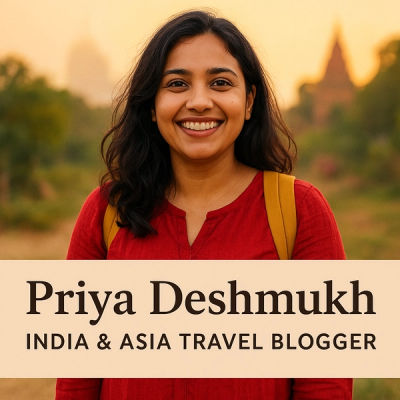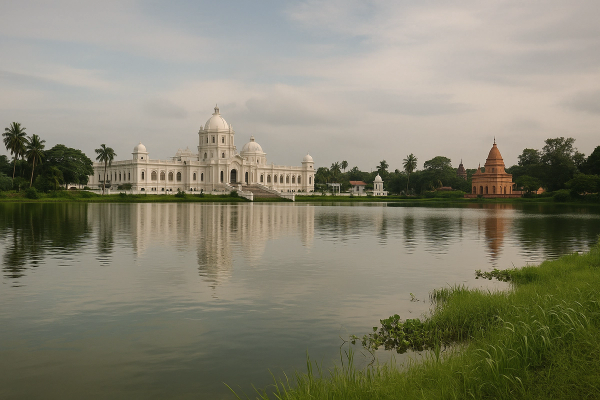Best Dark Sky & Stargazing Spots in India (2025) – messy skies, cold toes, and a whole lotta wonder#
I swear the night sky can still shut me up. Me, the chatterbox. In 2025 I chased stars across India – from wind-whipped deserts to oxygen-thin Himalayan villages – and it wasn’t neat or perfect. I got altitude headaches, lost a glove, my tripod kind of broke… and then boom, the Milky Way over Hanle, like someone flung powdered sugar across black velvet. I cried a tiny bit, ngl.¶
Why India for stargazing right now (yes, like 2025 now)?#
India’s astro-tourism scene kinda exploded after Chandrayaan-3 stuck that lunar landing and then Aditya-L1 got busy with the Sun. People are suddenly sort of obsessed (in the best way) with space. In early 2025, community homestays around dark-sky villages are booking up faster than I expected, weekend astro-camps are popping up near big cities, and the gear rental scene got way easier. Also important: the Hanle Dark Sky Reserve in Ladakh isn’t hype – it’s a legit government-notified reserve since 2022 and still the crown jewel for serious sky hunters.¶
The places that actually blew my mind#
I didn’t hit every spot (India is… huge), but these were my favs. Some nights were 10/10. Some 3/10 because clouds, you know. Still worth it every time.¶
Hanle, Ladakh – India’s dark-sky poster child#
Hanle sits way up at ~4,500 m, next to the Indian Astronomical Observatory. Thin air, sharper stars. The Dark Sky Reserve here isn’t just a label – the local administration’s low-light rules make a massive difference. My homestay switched to shielded warm lights and they politely asked us to cut headlights near the village after dark. It felt respectful, and kinda special.¶
Personal bit: me and Arjun dragged ourselves out at 2:30 am, shivering like idiots, because the winds finally died. I’ve never seen the Milky Way that crisp. It was like someone drew it with a silver pen. We also spotted Andromeda with naked eyes (I wouldn’t have believed me if I hadn’t seen it).¶
- Best season: April–June and Sept–Oct. July–Aug is monsoon cloudy, winters are brutal cold but wow skies.
- Permits 2025: For Indian nationals, Inner Line Permit is still required for Hanle and some border-adjacent areas. Foreign travelers generally need Protected Area Permits for parts of Ladakh; easiest via registered travel agents in Leh, takes 1–2 days. Always check LAHDC or local admin updates before you go.
- Getting there: Fly to Leh. Roads to Hanle can close after fresh snow, especially Nov–March. In 2025 early spring openings were a bit patchy due to late snow.
- Stay & prices: Simple homestays at Hanle were around ₹1,500–₹3,500 per night in 2025, including dinner/breakfast. A couple of astro-focused stays offer guided night walks and telescope sessions for an extra ₹1,000–₹2,500.
Spiti Valley, Himachal Pradesh – villages that feel like planetariums#
Kaza, Langza (hello giant Buddha), Hikkim (world’s highest post office), Dhankar – I bounced around these tiny moonscapes in late September. High altitude again, but slightly softer than Hanle. A local kid showed me a shooting star and grinned like he owned the sky. Clouds did mess with me in Kaza two nights running, but Dhankar cleared just in time and treated me to Orion rising over jagged brown ridges.¶
- Roads & safety 2025: The Kaza–Manali road can close after snow or landslides. Monsoon in July–Sept brings rockfalls. Keep flexi dates, carry AMS meds, go slow with acclimatization.
- Prices: Homestays mostly ₹1,200–₹2,500. Some “astro stays” run by local women offer constellation tours – super wholesome – for around ₹800–₹1,500 a session.
- Pro tip: Pack red-light headlamps. Locals really appreciate when visitors don’t blast white LEDs all night.
Thar Desert, Rajasthan – dunes, camels, and ridiculously clear winter nights#
Jaisalmer felt warmer, friendlier, and the sand doesn’t get into your lens as much as people say if you’re careful. I stayed near Khuri, well outside town, where generators go quiet by 10 pm. No mountains here, just endless sky. We laid on the sand and counted satellites until we lost track. One mildly chaotic night the wind flipped my tripod… laugh or cry moment… we laughed.¶
- Best time: Nov–Feb for clarity and low humidity. Summer is hot hot hot, and heat haze is annoying.
- Desert camps: Lots of flashy ones near Sam – light pollution can be bad. Choose smaller eco-camps near Khuri or further out. ₹2,000–₹6,000 per night range in 2025, with stargazing add-ons sometimes included.
Rann of Kutch, Gujarat – salt flats that glow under moonlight#
White desert, weirdly quiet nights. I went in December, around new moon, when the salt flats are like a giant mirror for darkness. We stitched star trails for two hours while jackals yipped far away. Kinda spooky. Kinda perfect.¶
- Stay: Bhuj as base or Hodka/Bhirandiyara village stays. The “Tent City” is fun but too bright. Homestays usually ₹1,500–₹3,000. Smaller desert lodges ₹4,000–₹7,000.
- Season & permits: Oct–Feb prime. Some border-adjacent areas need permission – check with local tourism office in Bhuj before wandering too far off.
Binsar, Uttarakhand – forest dark if you pick the right ridge#
Binsar Wildlife Sanctuary surprised me. It’s not super high, but the forest lodges keep lights dim and switch off by 10. I got patchy clouds, then a sudden tear in the sky and bang, the Pleiades popped out like a glitter spill. Short hike from the lodge and you’re in complete darkness. Also, leopards are a thing here, so stick to trails, don’t be dumb like me wandering off for a better angle… I got scolded by the caretaker with full mountain dad energy.¶
- Prices: Mid-range lodges in 2025 at ₹3,500–₹8,000, with simple homestays under ₹2,000. Book weekends early.
Andaman Islands – Havelock’s beach-side stargazing isn’t just romance fluff#
I know islands aren’t the first thought for dark skies, but Havelock (Swaraj Dweep) gave me one of the cleanest horizons. Far from Beach No. 2 lights, the southern stretch has super low glow. Humidity is a pain, yes, but after midnight the sky steadies. Coral sands, a faint breeze, Milky Way rising over coconut silhouettes… I’m a sucker for it.¶
- Travel note: Ferries can be delayed in monsoon. Dry season Nov–May is best for stars. Resorts range ₹4,000–₹9,000; basic huts still around ₹1,800–₹3,000 if you hunt.
2025 practical stuff I wish I knew before#
Visas & entry: As of 2025, the India e‑Visa for tourism is available for many nationalities (US, UK, EU, Aus, etc.). Apply online at the official government portal, bring the printed e‑Visa, and make sure your passport has 6 months validity. Fees vary by nationality and duration. If you’ve got a 30‑day e‑tourist visa, don’t overstay – it’s strictly enforced. Yellow fever certificate only if coming from certain countries. Always double‑check the official site before you book… things do change and random third‑party sites are sketchy.¶
Permits in border areas: Ladakh’s Hanle, Pangong, Tso Moriri, parts of Nubra – expect Inner Line/Protected Area rules to still apply in 2025. For foreigners, permits are usually issued via local agents with your passport and visa copies, and you often need to travel in pairs or with a guide for certain routes. Carry physical copies, phone signals drop to zero at night.¶
Safety updates 2025: Winter closures remain a thing in high Himalaya. Altitude sickness isn’t brave – it’s dumb. Hydrate, ascend slow, carry Diamox if advised by your doc. Border tensions can flare; keep an eye on advisories, especially in eastern Ladakh. In deserts, watch for sandstorms; in forests, respect wildlife. I didn’t meet trouble, but I met my limits a few times.¶
Gear & rentals: Tripod, fast lens (f/1.4–2.8), red headlamp, spare batteries (cold kills them), soft brushes for dust. In 2025, Leh and Kaza both had small shops renting tripods and even entry‑level star trackers for ₹1,000–₹2,500 a night. Not everywhere, but better than it used to be.¶
Costs in 2025 (what I actually paid or got quoted)#
Everybody asks this. Rough numbers from my notes: homestays ₹1,200–₹3,500 per night most places I listed. Desert camps ₹2,000–₹6,000. Mid‑range lodges ₹3,500–₹8,000. Guided stargazing walks ₹800–₹2,500 per person depending on gear included. Car with driver in Ladakh was ₹4,500–₹7,000 per day in shoulder season. Local buses are cheaper but not comfy at midnight, which is kinda when you want to be out there.¶
My mistakes (learn from them plz)#
- I didn’t acclimatize properly in Leh before pushing to Hanle. Headache city. Stay 1–2 nights in Leh first.
- I booked a shiny desert camp too close to Jaisalmer lights. Pretty, but too bright for star shots. Choose the scruffy camp further out.
- I trusted a weather app too much in Spiti. Local sky watch + asking the homestay grandma was more accurate.
- I forgot extra memory cards. Don’t. You will shoot way more long exposures than you plan.
What made it magic (the small messy bits)#
A cup of salty butter tea at 3 am that tasted weirdly like comfort. A group of school kids in Kaza shrieking at their first meteor. Khuri dunes, silent except our dumb giggles when the wind toppled my tripod. The caretaker at Binsar calming me down after a rustle in the bushes that was probably a porcupine but felt like a tiger. Someone’s old radio in Bhuj fizzing a Bollywood song under a sky filled with Orion. It’s never just the stars, it’s the whole human soup around it.¶
2025 booking & trend tips I actually believe#
- Weekday trips win. Astro-camps near big cities sell out Friday–Sunday.
- New moon still matters. Lunar calendars aren’t magical, they’re practical.
- Community-run “astro stays” are rising in Ladakh and Himachal. Women guides are absolute gems – patient, funny, and the best at pointing constellations without making you feel dumb.
- Keep plans flexible. Landslides, ferry delays, road closures – India doesn’t care about your Google Calendar.
Food things (because stargazing makes you hungry)#
Thukpa in Leh after a cold night is basically medicine. Bajra rotla in Kutch with jaggery for dessert? Dreamy. In Spiti, momos everywhere, and apple pie that tastes like it was baked at altitude which it was. In Jaisalmer, dal baati churma will put you to sleep, so maybe don’t eat a kilo right before your midnight shoot. Coconut water in Havelock at sunrise… chef’s kiss.¶
Would I go back?#
Yes. Again and again and probably again. I haven’t seen Zanskar or Arunachal’s valleys at night properly yet. I want to spend a longer winter week in Hanle to try real deep-sky with tracking. I wanna take my mom to Binsar because she still calls the Milky Way “that river of light,” which makes me tear up, and I’m not even a crier usually. India is messy and stubborn and sometimes loud, but the nights… they’re generous.¶
Quick planning cheat sheet for 2025#
- Check e‑Visa details on the official portal only, print everything, and keep copies.
- For Ladakh and other border sectors, confirm permit rules a week before travel. Policies can shift.
- Altitude: 24–48 hours acclimatization in Leh before heading to Hanle or Nubra.
- Best months: Oct–Feb for deserts and forests; Apr–Jun & Sept–Oct for high Himalaya. Avoid peak monsoon.
- Pack red-light headlamps, warm layers, and respect local light curfews. Don’t ruin the sky for others.
If you want more of my rambling, photos, and the small honest bits, I drop longer trip notes on AllBlogs.in sometimes. Not perfect, but real. See you under that river of light.¶














